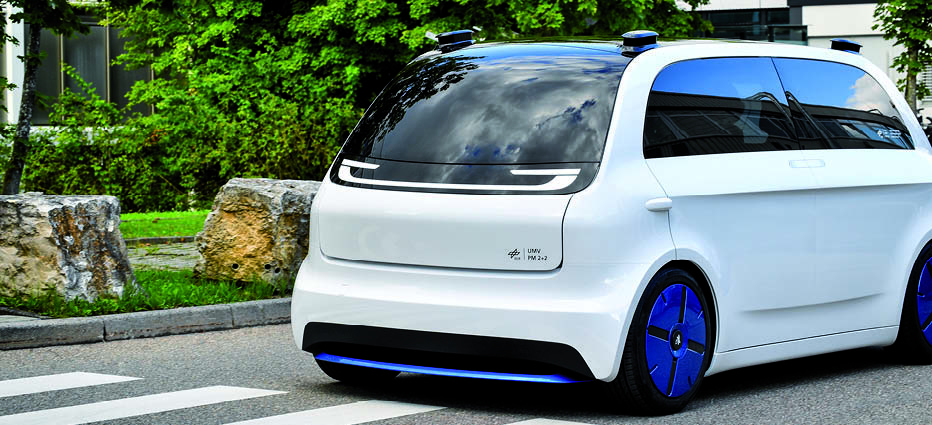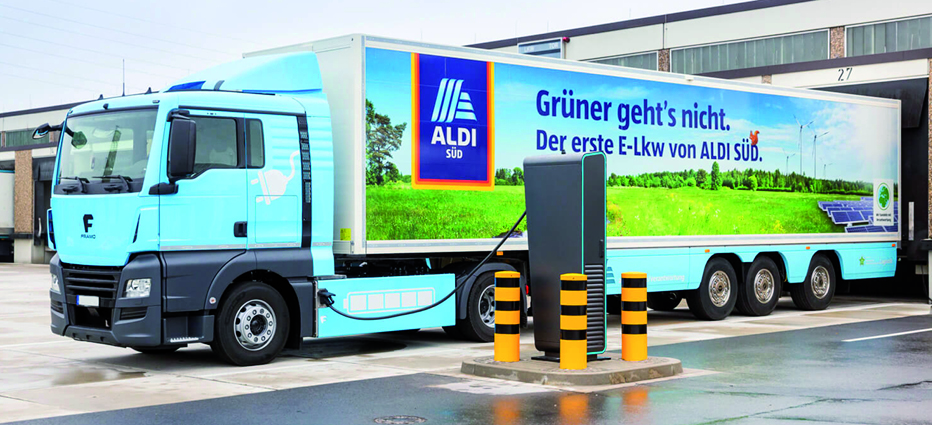
The German Aerospace Center (Deutsches Zentrum für Luft- und Raumfahrt; DLR) presents the prototype of its Urban Modular Vehicle (UMV) for the first time. This intelligent, modular electric city car brings together DLR research in the fields of automated and networked driving, propulsion technology, vehicle design and structure, energy management and chassis mechatronics.
Further exhibits at the DLR stand (Hall 5, D04) will explain how automated driving can be tested using a high-tech test infrastructure and how mobility behaviour can be recorded quickly and efficiently using smartphones.
“At IAA New Mobility World, DLR transport research will be demonstrating forward-looking solutions that will enable people to reach their destinations more comfortably while simultaneously saving resources such as space, time and energy. The ideas being presented at our stand are both an inspiration and a challenge to shape the mobility of the future today,” explains Karsten Lemmer, DLR Executive Board Member for Energy and Transport.
The city car of tomorrow – a completely new way of thinking
With the aim of bringing innovations in the mobility sector onto the road quickly and cost-effectively, DLR transport researchers have completely rethought the city car of tomorrow. The requirements for such a vehicle are stringent and varied. It needs to be automated and electrically powered, meet high safety standards, be comfortable and at the same time flexible and efficient to manufacture. “The keyword of the UMV concept is modularisation, which goes far beyond the platform-based construction methods currently used in automotive engineering,” says Marco Münster, a DLR researcher and head of the UMV project. From the small city run-around to the larger, autonomous versions – the People Mover and Cargo Mover – all of the eight different variants of the UMV family are built on a common basis. The length of the floor module can be adjusted, and the front and rear modules are common to all variants. The centre of the vehicle changes depending on the intended use. The use of multi-material construction and function integration ensures that the body structure of all variants is optimally adapted to electric propulsion and offers a high level of crash safety. A sophisticated overall energy management system coordinates and directs the energy flows of the interior, battery and electric motor for an optimum operating strategy.

UMV People Mover 2+2 as an autonomously driving shuttle
DLR transport researchers have implemented the UMV People Mover 2+2 variant as the first drivable prototype. This vehicle offers space for four people and is intended for use as an autonomous shuttle in urban areas, for example to provide on-demand mobility services. The user summons the vehicle via an app and activates it using an interface in the side window so that the sliding doors open. The interior has a simple design and offers two central monitors with information on travel time, route and vehicle status. The typical driving time in this context is between eight and 20 minutes. The lidar and radar sensors and cameras required for autonomous driving are located on the roof, in the front bumper and in special panels. The current demonstration vehicle is not yet fully autonomous; it is controlled via a sidestick. The researchers want to investigate the concept and user experience as a first step. In the next stage, sensor technology, hardware and software will be integrated for autonomous driving.
Edyta Szwec